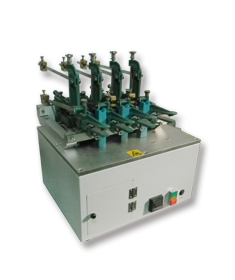
NewsInformation Center
What is the Wyzenbeek test used for?
2023/09/20
The Wyzenbeek test is a widely used method to evaluate the abrasion resistance or durability of fabrics. This test helps determine the ability of a fabric to withstand the wear and tear that occurs during everyday use, such as rubbing against other surfaces or frequent contact with clothing or skin. The information obtained from the Wyzenbeek test is crucial for various industries that rely on textiles, including home furnishings, automotive, apparel, and more.
The primary purpose of the Wyzenbeek test is to simulate and measure the fabric's resistance to abrasion, commonly caused by repeated rubbing or friction. By subjecting the fabric to controlled and repeatable abrasion forces, this test provides objective data to assess its ability to withstand wear over time.
Here are some key aspects of the Wyzenbeek test and its application:
1. Test Procedure:
The Wyzenbeek test involves rubbing a piece of fabric against a specified abrasive material. The fabric sample is firmly secured in a frame and subjected to back-and-forth motions using a mechanical arm or other device. The abrasive material, typically in the form of a cotton duck fabric or wire mesh, rubs against the fabric sample in a controlled manner. The test continues until a predetermined number of double rubs is reached or until the fabric shows visible signs of wear or damage.
2. Evaluation:
The Wyzenbeek test evaluates the fabric's performance based on the number of double rubs it can withstand before showing signs of wear or reaching a specified end-point criterion. The fabric's durability is determined by its ability to resist abrasion over a set number of cycles. Higher numbers of double rubs indicate better abrasion resistance and greater durability.
3. Standards and Specifications:
The American Society for Testing and Materials (ASTM) has developed standard test methods for abrasion resistance, including the Wyzenbeek test. The most commonly referenced standard for this test is ASTM D4157. This standard provides guidelines for the test procedure, criteria for evaluating test results, and other relevant details. However, it should be noted that different industries or applications may have their specific requirements and standards for abrasion resistance testing.
4. Application Areas:
The Wyzenbeek test is widely used in various industries to assess the durability of fabrics. Some common applications include:
- Home Furnishings: Upholstery fabrics, curtains, draperies, and other fabric materials used in residential furniture and interior design.
- Automotive: Fabrics used in automotive interiors, including seating, headliners, door trims, and other textile components.
- Contract and Commercial: Fabrics used in high-traffic areas such as hotels, restaurants, offices, and public spaces.
- Apparel: Outerwear fabrics, workwear, and performance textiles that require resistance to wear and tear during regular use.
5. Considerations and Limitations:
While the Wyzenbeek test provides valuable data on fabric durability, it is important to note that it primarily evaluates abrasion resistance and does not cover other factors such as strength, colorfastness, or resistance to other types of damages. Different fabrics and their end-use applications may have specific requirements that go beyond abrasion resistance. Therefore, it's crucial to consider the specific needs and performance criteria of each application when using Wyzenbeek test results as a basis for fabric selection.
In summary, the Wyzenbeek test is employed to assess the abrasion resistance and durability of fabrics. It helps manufacturers, designers, and end-users make informed decisions about fabric suitability for various applications. By subjecting fabrics to controlled friction, the Wyzenbeek test offers a standardized measure of a fabric's ability to withstand wear and tear, ensuring that it meets the required performance standards.
Previous: What is the difference between Wyzenbeek and Martindale?
N e x t : ATLAS ultraviolet lamps UVA and UVB use introduction




